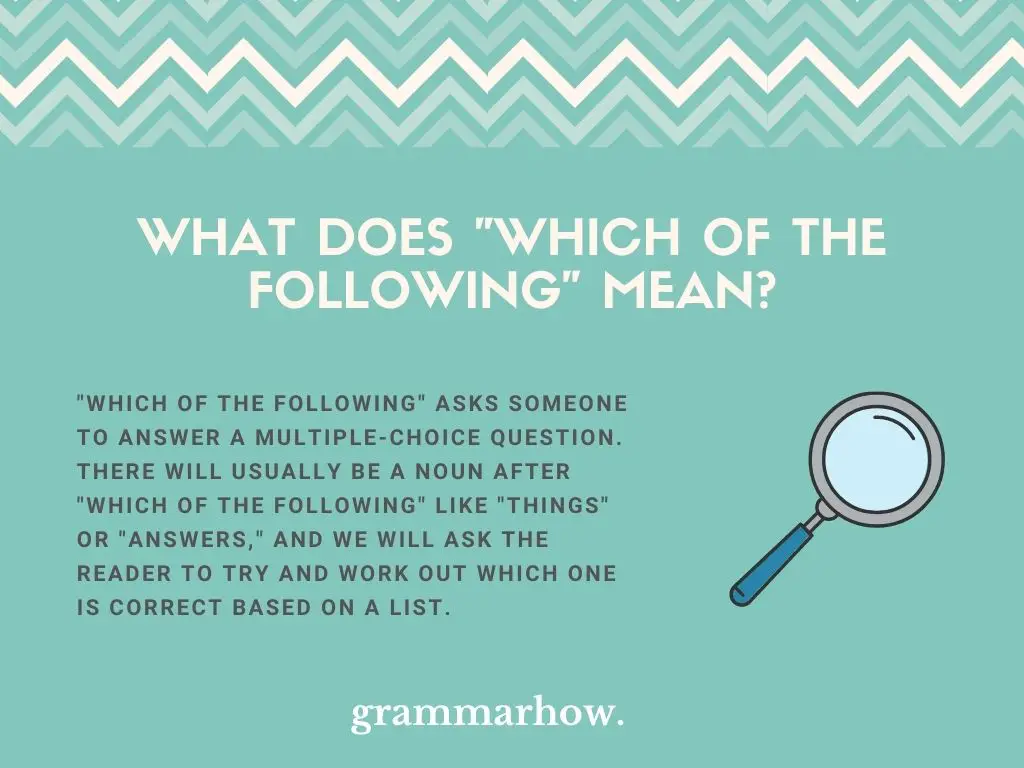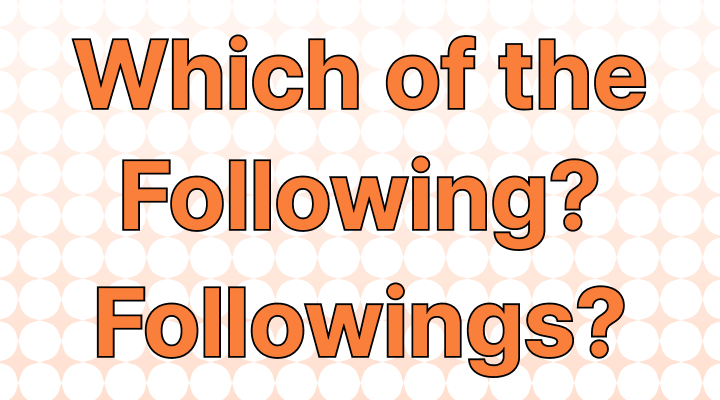The correct phrase to use is "Which of the following."
The word "following" is used as a present participle adjective in this context, and it is used to modify the noun "which." The phrase is commonly used in multiple-choice questions or when presenting a list of options for someone to choose from.
For example:
- Which of the following colors is your favorite?
- Please select which of the following options best describes your situation.
Using "followings" as a plural form in this context would be incorrect, as "followings" is not commonly used as a noun to refer to a list of options or choices. Stick with "following" to ensure proper grammar and usage, and don't forget "the" before "following."
Comparing "Which of the following", "Which of the followings", and "Which of following"

As shown in the Google Books Ngram Viewer graph above, the correctly phrased "Which of the following" has been used throughout the last few decades while the incorrect phrasing "Which of the followings" and "Which of following" have not been used.
👈 Chose vs. Choose
👈 Bias Meaning and Examples
👈 Perfer or Prefer: Which Is Correct?
Example sentences
- Which of the following books is your favorite classic novel?
- Please indicate which of the following dishes you'd like to order for dinner.
- Choose which of the following destinations you want to visit on the trip.
- The quiz question asks, "Which of the following animals is a marsupial?"
- I can't decide which of the following colors to paint the bedroom walls.
- Students need to identify which of the following equations is correct.
- In this survey, please tell us which of the following hobbies you enjoy the most.
- The job application requires you to select which of the following skills you possess.
- Please circle which of the following words is the correct spelling.
- The sales presentation includes a comparison of which of the following products perform better.
Want to sound like a native speaker?
Engram’s AI-powered grammar checker makes your English sound like a native speaker’s, suggesting natural English expressions on top of fixing grammar, spelling, punctuation, word order, and vocabulary.

Reference:
















